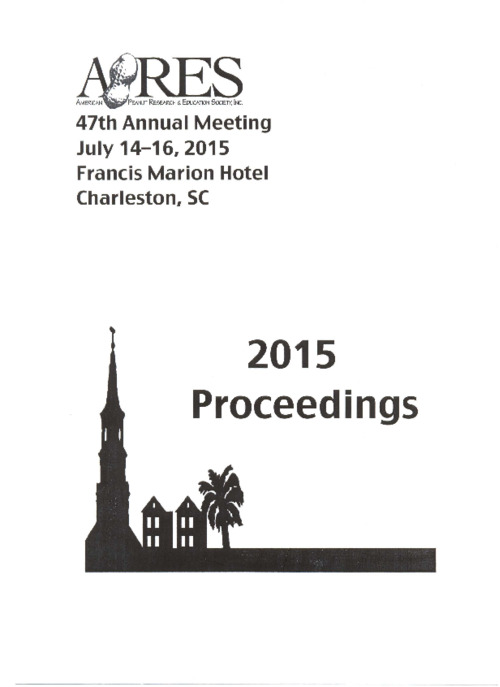Yield loss Modeling for late Leafspot and Rust in Groundnut
Abstract
Late leaf spot and rust diseases occur together and cause considerable yield loss in groundnut.
 Cultivation of resistant varieties is the best strategy to stabilize productivity under disease epidemics.
 Several varieties resistant or moderately resistant to LLS and rust have been developed in groundnut, but
 most of them differ in yield loss even at the same level of disease due to complex interrelationships
 between disease and yield loss. Crop loss models have been employed to gain insight into these
 relations and to plan sound breeding strategies. In the present study, different empirical models were
 tested for their explanatory value for yield loss among 10 groundnut genotypes with varying level of
 resistance to late !eafspot and/or rust. Towards yield loss modeling, disease severity at different growth
 stages and physiological traits viz., leaf area index (LAI), harvest index (HI), healthy leaf area duration
 (HAD), crop and pod growth rates(CGR and PGR) and partitioning coefficient (PC) were considered as
 independent variables, while yield loss as dependent variable in regression models.
 Single pOint models based on disease did not explain the variation in loss completely, but revealed pOd
 fill ing as the critical stage in determining yield loss. Multiple point models using disease at different stages
 marginally improved the explanatory value; Inclusion of physiological traits in stepwise regression models
 improved the R2 considerably, revealing their relevance to yield loss. Yield loss varied significantly among
 the genotypes resistant to both LLS and rust (9-17%), moderately resistant to LLS or rust (18-26%) and
 susceptible to LLS and rust (30-42%). Resistant genotype, GPBD-4 had high yield potential with minimum
 yield reduction due to Its high partitioning efficiency and pod growth rate. Though highly susceptible,
 TAG-24 showed tolerance by early cessation of vegetative growth and efficient translocation of
 photosynthates to pOds leading to high harvest index

